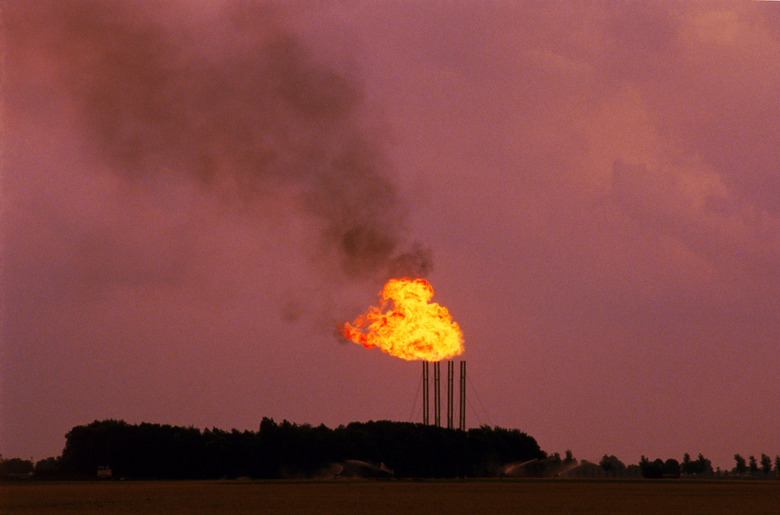Does Rain Water Contain Nitrogen?
Burning coal and gasoline produces many nitrogen oxide ions, which cause air pollution and acid rain. But normal rain also contains nitrogen oxide because of the presence of nitrogen gas in the atmosphere. Lightning can cause nitrogen gas to react with oxygen to produce nitrogen oxides, which is the natural source of nitrogen in normal rain. Nitrogen is cycled throughout the global ecosystem, going from nitrogen gas to ammonia to nitrites and nitrates, and then finally returning to the atmosphere as nitrogen gas. Human activity, such as power plants and automobiles, can increase the amount of nitrogen released into the air and thus increase the amount of nitrogen in rain water.
Struck By Lightning
Pure water has a pH of 7, meaning it is neutral, not acidic or basic. However, natural rain water is slightly acidic, having a pH of 5.6, because the part of the atmosphere that contains clouds also contains carbon dioxide, sulfur dioxide and nitrogen dioxide, which combine with water to form acids. Nitrogen gas in the atmosphere (N2) is struck by lightning to become nitrogen monoxide (NO), which reacts with oxygen (O2) to yield nitrogen dioxide (NO2) gas. NO2 then reacts with water to form nitric acid (HNO3). Thus, rain water contains nitrogen in the form of nitric acid.
Bottom Up
Nitrogen also gets into rain water from air pollution at the surface. The burning of fossil fuels in the form of coal and gasoline produces nitrite (NO2-) and nitrate (NO3-) ions. When burning temperatures exceed 538 degrees Celsius, nitrogen and oxygen combine to from nitrogen oxides. Nitrite and nitrate ions enter the atmosphere and interact with water vapor to become nitrous acid or nitric acid, respectively. These acids are part of what causes acid rain, which damages property and harms vegetation.
Human Activity
Human activity generates large amounts of nitrite and nitrate ions that enter the atmosphere to cause acid rain. The main sources are the burning of coal at power plants and gasoline in automobiles. Power plants in the American Midwest release millions of tons of nitrogen oxides into the air every year. The nitrogen oxides in the air not only cause acid rain that kills vegetation, they enter rivers and lakes as acid rain run-off and act as a fertilizer, which harms the balance of the ecosystem.
It Naturally Happens
Nitrogen is an important element in living organisms, and is naturally cycled throughout the ecosystem. The nitrogen cycle makes the nitrogen gas (N2) in the atmosphere into a form that is bio-available to organisms that cannot fix nitrogen. Nitrogen-fixing bacteria in the soil and roots of plants convert N2 gas into ammonia. Then, nitrifying bacteria convert the ammonia into nitrites and nitrates. Plants absorb the ammonia and nitrogen oxide ions into their structures, which are consumed by animals. When these animals die and decompose, the ammonia (NH3) in their bodies is released back into the soil. Lastly, denitrifying bacteria convert nitrites and nitrates back into nitrogen gas, re-introducing nitrogen into the atmosphere.
Cite This Article
MLA
Ph.D., David H. Nguyen,. "Does Rain Water Contain Nitrogen?" sciencing.com, https://www.sciencing.com/rain-water-contain-nitrogen-12322753/. 24 April 2017.
APA
Ph.D., David H. Nguyen,. (2017, April 24). Does Rain Water Contain Nitrogen?. sciencing.com. Retrieved from https://www.sciencing.com/rain-water-contain-nitrogen-12322753/
Chicago
Ph.D., David H. Nguyen,. Does Rain Water Contain Nitrogen? last modified March 24, 2022. https://www.sciencing.com/rain-water-contain-nitrogen-12322753/
